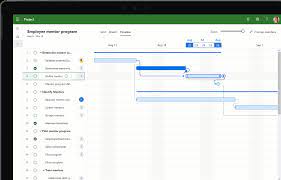ExhibitManager: Streamlining Your Exhibition Planning and Management
Planning and managing an exhibition can be a complex and time-consuming task. From coordinating logistics to designing an engaging booth, there are numerous details to consider. This is where ExhibitManager comes in, offering a comprehensive solution to streamline the entire process.
ExhibitManager is a powerful software platform designed specifically for exhibition planning and management. It provides event organizers with a centralized hub to efficiently handle all aspects of their exhibitions, saving time, reducing stress, and enhancing overall productivity.
One of the key features of ExhibitManager is its intuitive project management tools. With this software, you can easily create project timelines, assign tasks to team members, set deadlines, and track progress in real-time. This ensures that everyone involved in the exhibition is on the same page and working towards common goals.
The software also offers robust budgeting and financial management capabilities. You can create detailed budgets for each exhibition, track expenses, manage vendor payments, and generate comprehensive financial reports. This allows you to keep a close eye on your budget and make informed decisions throughout the planning process.
In addition to project management and budgeting tools, ExhibitManager provides advanced exhibitor relationship management features. You can easily store exhibitor information, manage contracts and agreements, communicate with exhibitors through integrated email systems, and track their participation status. This helps you maintain strong relationships with exhibitors while ensuring smooth communication before, during, and after the event.
Furthermore, ExhibitManager offers floor plan design functionalities that enable you to create interactive booth layouts. You can visualize different booth configurations, allocate spaces to exhibitors based on their preferences or sponsorship levels, and generate professional floor plans for easy reference. This feature simplifies the booth assignment process while maximizing space utilization.
Another notable aspect of ExhibitManager is its integration capabilities with other event management systems such as registration platforms or lead capture tools. This seamless integration ensures that data flows smoothly between different systems, eliminating the need for manual data entry and reducing the risk of errors.
Overall, ExhibitManager is a comprehensive software solution that revolutionizes exhibition planning and management. By centralizing all aspects of the process, it empowers event organizers to work more efficiently, collaborate effectively, and deliver exceptional exhibitions.
If you’re an exhibition organizer looking to streamline your operations and enhance the overall success of your events, consider incorporating ExhibitManager into your workflow. With its user-friendly interface and robust features, it’s a valuable tool that will undoubtedly make a positive impact on your exhibition planning journey.
Frequently Asked Questions About ExhibitManager: Features, Getting Started, Pricing, Exhibit Types, and Data Security
- What features does exhibitmanager have?
- How do I get started with exhibitmanager?
- How much does exhibitmanager cost?
- What types of exhibits can be managed with exhibitmanager?
- How secure is the data stored in exhibitmanager?
What features does exhibitmanager have?
ExhibitManager offers a range of features designed to streamline exhibition planning and management. Some key features include:
- Project Management: ExhibitManager provides tools to create project timelines, assign tasks, set deadlines, and track progress in real-time. This feature ensures efficient collaboration and keeps everyone involved on the same page.
- Budgeting and Financial Management: The software allows you to create detailed budgets, track expenses, manage vendor payments, and generate financial reports. This feature helps you stay within budget and make informed financial decisions.
- Exhibitor Relationship Management: ExhibitManager enables you to store exhibitor information, manage contracts and agreements, communicate with exhibitors through integrated email systems, and track their participation status. This feature facilitates effective communication and helps maintain strong relationships with exhibitors.
- Floor Plan Design: The software offers floor plan design functionalities that allow you to create interactive booth layouts. You can visualize different booth configurations, allocate spaces to exhibitors based on their preferences or sponsorship levels, and generate professional floor plans for reference.
- Integration Capabilities: ExhibitManager seamlessly integrates with other event management systems such as registration platforms or lead capture tools. This integration ensures smooth data flow between different systems, eliminating manual data entry and reducing the risk of errors.
- Reporting and Analytics: The software provides reporting features that allow you to generate various reports related to budgeting, exhibitor participation, attendee engagement, and more. These reports provide valuable insights for future planning and decision-making.
- Mobile Access: ExhibitManager offers mobile access through its app or responsive web interface. This allows users to access important information on the go and stay connected with their exhibition management tasks.
- Customization Options: The software provides customization options to tailor the platform according to your specific needs. You can customize fields, templates, workflows, and more to align with your exhibition requirements.
- Support and Training: ExhibitManager typically offers customer support services and training resources to help users navigate the software effectively and maximize its potential.
These are just some of the features that ExhibitManager offers. The software aims to provide a comprehensive solution for exhibition planning and management, empowering event organizers to streamline their operations and deliver successful exhibitions.
How do I get started with exhibitmanager?
Getting started with ExhibitManager is a straightforward process. Here are the steps to help you begin:
- Research and Evaluate: Start by visiting the official ExhibitManager website to learn more about the software and its features. Take your time to understand how it can benefit your exhibition planning and management needs.
- Request a Demo or Free Trial: Many software providers offer demos or free trials of their products. Reach out to ExhibitManager’s sales team or visit their website to request a demo or trial version of the software. This will allow you to explore its functionalities firsthand and determine if it meets your requirements.
- Attend Training Sessions: Once you have access to ExhibitManager, take advantage of any training sessions or tutorials provided by the company. These resources will help you familiarize yourself with the software’s interface, features, and best practices for efficient usage.
- Set Up Your Account: Follow the instructions provided by ExhibitManager to set up your account. This typically involves creating a username and password, as well as entering relevant information about your company or organization.
- Customize Your Settings: After setting up your account, take some time to customize the settings according to your specific needs. This may include configuring project templates, creating custom fields, adjusting notification preferences, or setting up user roles and permissions.
- Input Data: Start inputting data into the system based on your exhibition requirements. This may include exhibitor information, project timelines, budgets, floor plans, contracts, and other relevant details.
- Collaborate with Your Team: If you’re working with a team on exhibition planning, invite them to join ExhibitManager and assign them appropriate roles and responsibilities within the system. Encourage collaboration by utilizing features such as task assignments, document sharing, and communication tools offered by ExhibitManager.
- Explore Additional Features: As you become more comfortable with using ExhibitManager for basic tasks, explore additional features that can further enhance your exhibition planning and management. This may include integration with other event management systems, advanced reporting capabilities, or analytics tools.
- Seek Support: If you encounter any issues or have questions about using ExhibitManager, don’t hesitate to reach out to their support team. They are there to assist you and ensure a smooth experience with the software.
Remember, getting started with ExhibitManager may require some time and effort initially, but the benefits of streamlined exhibition planning and management will be worth it. Embrace the features and functionalities offered by the software to simplify your workflow, increase efficiency, and deliver successful exhibitions.
How much does exhibitmanager cost?
The pricing for ExhibitManager can vary depending on factors such as the size of your organization, the number of users, and the specific features and modules you require. It is best to contact the ExhibitManager team directly for accurate and up-to-date pricing information tailored to your specific needs. They will be able to provide you with detailed pricing options and any available discounts or packages that may be applicable.
What types of exhibits can be managed with exhibitmanager?
ExhibitManager is a versatile software platform that can manage various types of exhibits, catering to the needs of different industries and event formats. Some of the common types of exhibits that can be managed with ExhibitManager include:
- Trade Shows: ExhibitManager can handle trade shows of all sizes, from small regional events to large international exhibitions. It assists in managing booth assignments, exhibitor registrations, floor plan layouts, and overall event logistics.
- Conferences and Expos: For conferences or expos that include an exhibition component, ExhibitManager can efficiently manage exhibitor registrations, booth allocations, sponsorship details, and communication with participating companies.
- Art Exhibitions: Whether it’s a gallery showcase or a large-scale art exhibition, ExhibitManager helps streamline the process of managing artwork submissions, artist information, installation schedules, and exhibit layout planning.
- Product Launches: When launching a new product or service at an exhibition or special event, ExhibitManager assists in organizing product displays, coordinating demo stations or interactive areas, and managing the logistics related to showcasing the new offering.
- Museum Exhibits: For museums organizing temporary or permanent exhibits, ExhibitManager can help with exhibit planning and design coordination. It aids in managing artifact information, exhibit timelines, multimedia integration, and visitor flow management.
- Job Fairs and Recruitment Events: ExhibitManager simplifies the management of job fairs by handling exhibitor registrations, booth assignments for hiring companies or organizations, attendee registration tracking for employers seeking talent acquisition opportunities.
- Educational Exhibits: Whether it’s a science fair or an educational conference with exhibits focused on specific subjects like technology or sustainability, ExhibitManager can assist in managing exhibitor applications and booth arrangements while ensuring smooth communication between organizers and participants.
These are just a few examples of the types of exhibits that can be effectively managed using ExhibitManager. The software’s flexibility allows it to adapt to various event formats and industries while providing comprehensive tools for planning, management, and communication.
How secure is the data stored in exhibitmanager?
ExhibitManager takes data security seriously and implements various measures to ensure the protection of stored data. Here are some key aspects of data security in ExhibitManager:
- Encryption: All data transmitted between your device and ExhibitManager’s servers is encrypted using industry-standard SSL/TLS protocols. This ensures that your data remains secure during transmission.
- Access Control: ExhibitManager employs strict access control mechanisms to limit access to your data. User authentication is required, and each user is assigned specific roles and permissions, ensuring that only authorized individuals can access sensitive information.
- Data Storage: Your data is stored in secure servers hosted by reputable cloud service providers. These providers adhere to strict security standards, including physical security measures, firewalls, intrusion detection systems, and regular backups.
- Regular Updates and Patches: ExhibitManager regularly updates its software to address any vulnerabilities or bugs that may arise. These updates include security patches to ensure that the system remains resilient against potential threats.
- Compliance with Data Protection Regulations: ExhibitManager complies with relevant data protection regulations, such as the General Data Protection Regulation (GDPR) in the European Union. This means that your personal data is handled in accordance with established privacy principles.
- Data Backups: ExhibitManager performs regular backups of your data to protect against loss or accidental deletion. These backups are securely stored and can be restored if needed.
While ExhibitManager implements robust security measures, it’s important to note that no system can guarantee 100% protection against all possible threats. It’s always advisable for users to take additional precautions such as using strong passwords, regularly updating their devices, and being cautious when sharing sensitive information.
If you have specific concerns about data security or would like more detailed information about ExhibitManager’s security practices, I recommend reaching out directly to their support team for further clarification.


